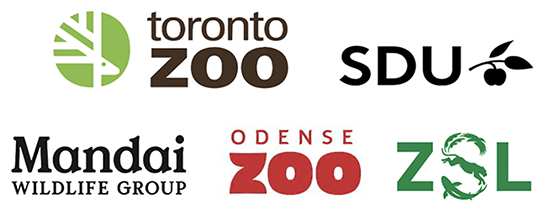Many species today are classified by the IUCN as threatened, and there are many others not yet in that category which are nevertheless in decline and losing genetic diversity. It is therefore important to ensure and preserve samples from these species as a valuable resource for the future.
Zoos and aquariums are potential havens for storing genetic diversity, not only through the animals under their care, but also through biobanking of samples. The EAZA membership has established the EAZA Biobank, which has facilities and an infrastructure that allows optimal storage of samples from all species held in EAZA institutions. The samples will be linked to the individual animal ́s information on husbandry and health in the Species360 ZIMS (Zoological Information Management Software) global database, which standardizes historical and living records records across more than 1000 institutions providing a plethora of possibilities for coupling genotype with phenotype information.
The samples deposited in the EAZA Biobank will be a primary resource for supporting population management decisions and genetic rescue efforts for threatened species. However, given the large number of species at risk of extinction, one of the most complex issues is the complexity and responsibility of deciding on which species to focus initial efforts for cryobanking cells for genetic rescue, given that we are in a race against time.
Therefore, regional zoo and aquarium associations, together with WAZA, are now developing an effective strategy to respond to the immediate need for collecting and storing cells for targeted species. In parallel, the development of a global biobanking database using ZIMS is being developed to help decision-makers guide efforts for storing cells and genetic samples essential for ongoing and future species conservation and management activities.
Read the full article “Saving samples, saving species: Why biobanking is essential for genetic rescue and population sustainability” in the paper published in EAZA’s journal Zooquaria, a collaboration between Prof. Dalia A. Conde and Dr. Johanna Staerk, from the Species360 Conservation Science Alliance, Dr. Oliver Ryder, Director of Conservation Genetics at San Diego Zoo Global, Dr. Boripat Siriaroonrat, Director for Conservation & Research at the Zoological Park Organization, Thailand and Dr. Christina Hvilsom, geneticist at Copenhagen Zoo.








